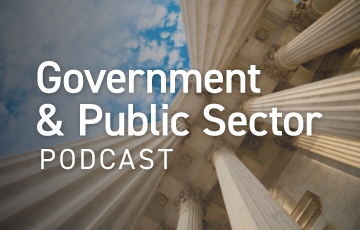No matter the industry, your daily job is important. You deliver valuable products and services to your market, impacting those who depend on you. Whether you offer a broad range of services to the worldwide community or specific programs to a targeted local group, clarity of your true costs on a unit-by-unit basis is critical to ensure sustainability, maximize impact and create internal efficiencies.
As the diversity of your services increases, the true cost of delivering a service becomes increasingly opaque. Blurring costs across different programs and grants is not due to poor accounting practices or lack of proper planning and budgeting; it is due to the uncertainty of indirect costs and how to apply it.
State, Local, Tribal and Nonprofit organizations all share the same challenge: how to assign organization-wide shared costs (indirect costs) to the final product line or service received. All organizations have indirect costs that benefit the entire organization at variable levels per program or grant. It is then difficult to add these indirect shared costs onto your organization’s direct costs to calculate the true cost of the services you perform.
The Indirect Cost Problem
Many organizations do not know how to assign indirect costs to their programs or grants. This puts them at risk of taking on grants they cannot support, which forces them to use taxpayer dollars that should be used for core mission services to fund grant programs unknowingly. This also causes them to miss opportunities for cost recovery that could fund new services and projects the organization wants to support.
According to USAspending.gov in FY 2023, organizations have obligated $7.6 Trillion in grant funding programs. These funds span all types of services and programs critical to the citizens accessing services. However, 9-20% of those funds is unspent each year due to flawed program design, timing or lack of capacity to execute.[1]
This adds to around $1.5 Trillion unspent annually. Indirect Cost is not factored into grants most of the time for many different reasons. These costs are subsidized year over year by your organization when the funds could be coming back into your organization from these grants you were awarded. You can recover those costs, allowing you to spend the funds you receive from other sources for what they are intended.
The Cost Allocation Plan Solution
The solution lies in understanding what your indirect cost truly is. Once you know this, you know what it costs to fully perform your different services. This can be accomplished by preparing a cost allocation plan for your organization that informs you on your organization-wide indirect cost regardless of funding source.
Then, you can take it a step further by negotiating your indirect cost rate (NICRA) with your federal cognizant agency. By obtaining a NICRA, you unlock the opportunity to apply this indirect cost rate on all your grants for full Cost Recovery.
The Outcome
By obtaining a NICRA for your organization, you are opening the door to full cost recovery. With your NICRA, you can go back up to 2 years and access unspent dollars from the grants you were awarded, bringing in those indirect costs that you already subsidized.
By doing this, these funds come back into the General Fund unrestricted because they were subsidized in the year of service. You can now use these funds to fill budget gaps, purchase technology or perform projects you always wanted to accomplish but never had the funds to do so.
In addition, some grants require a match component to access the grant. This leaves the organization in a place where these funds must be available before they can even apply for the grant.
Now with the 2 CFR part 200.306.7(c), you can use your NICRA as your match component, and you no longer have to set aside cash up front. This is the federal government’s way of acknowledging that indirect cost is a true cost of performing services on a particular grant.
State, Local Governments, tribal and nonprofit organizations have very distinct missions, requirements and restrictions. However, they do share one driving commonality: they all want to deliver the best products and services in the most efficient manner possible. Visibility of the true cost of service is essential to survive in any industry. By leveraging a cost allocation plan and indirect cost, true costs can be fully understood, and full cost recovery can be accomplished.
How Cherry Bekaert Can Be a Part of the Solution
Many municipalities receive grant dollars. Often, not all awards are spent because of limited resources or timing. Cherry Bekaert’s Cost Recovery Services will assist you in recovering any unspent dollars on those awards by leveraging your indirect cost rate for your current Fiscal year and two years prior.
We assist you in preparing your Indirect Cost Rates and obtaining your NICRA, so you can achieve your mission and goals. We then determine the actual amount available and support you in drawing down any available funds for maximum recovery.
Your organization has already subsidized the indirect cost on these grants previously, so you are simply being reimbursed for these funds otherwise lost at the end of the grant period. These funds come back into your General Fund as unrestricted and can be used to help better address the organization’s mission, goals and objectives.




